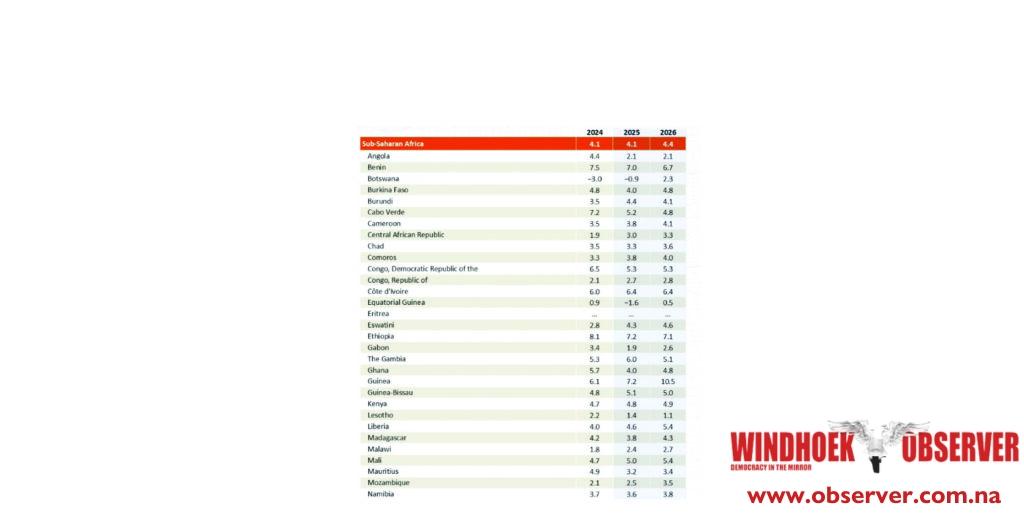Chamwe Kaira
The International Monetary Fund (IMF) has projected that Namibia’s economy will grow by 3.6% in 2025, compared to 3.7% in 2024.
The IMF predicted Namibia’s growth to reach 3.8% in its October Sub-Saharan Africa report.
Angola’s economy is projected to grow by 2.1% in 2025, down from 4.1% in 2024. Botswana is expected to record a negative growth of -0.9% in 2025, compared to -3.0% in 2024. The IMF expects Botswana’s economy to recover to 2.3% in 2026.
Sub-Saharan Africa’s economic growth is expected to remain steady at 4.1% in 2025, with a small increase in 2026. The IMF said this will be supported by macroeconomic stabilisation and reform efforts in key economies.

The Fund noted that resource-dependent and conflict-affected countries continue to face major challenges. It said global growth remains weak and commodity prices are uneven. Borrowing conditions are still tight, even though sovereign spreads have narrowed and portfolio inflows have resumed since April.
“The global trade policy and aid landscape have deteriorated sharply, but the direct exposure is modest for many countries in the region. Nonetheless, several lower-income and fragile countries are disproportionately exposed to aid cuts, threatening the delivery of essential services, and some remain acutely exposed to trade pressures. Uncertainty persists and risks remain tilted to the downside,” it said.
The IMF said Sub-Saharan Africa remains resilient despite a difficult global environment, uneven commodity prospects, and tight borrowing conditions.
“But this resilience cannot be taken for granted. Overlapping monetary, financial, external, and fiscal vulnerabilities are present in much of the region. Uncertainty persists and risks remain tilted to the downside. Domestic revenue mobilisation and strengthened debt management can help bolster macroeconomic stability while funding essential development needs,” the IMF said.
It said forecasts have slightly improved since April due to progress in stabilisation and reform efforts, especially in Ethiopia and Nigeria.
The Fund said the region has shown strong resilience to several major shocks over the past years and includes some of the world’s fastest-growing economies, such as Benin, Côte d’Ivoire, Ethiopia, Rwanda, and Uganda.
“However, economic performance remains markedly weaker in resource-intensive countries and in several conflict-affected states. In these economies, which represent most of the region’s population, gains in income per capita remain modest, around 1% a year on average, and less in the poorest countries,” the Fund said.
Caption
The IMF has projected a lower GDP growth compared to last year.



